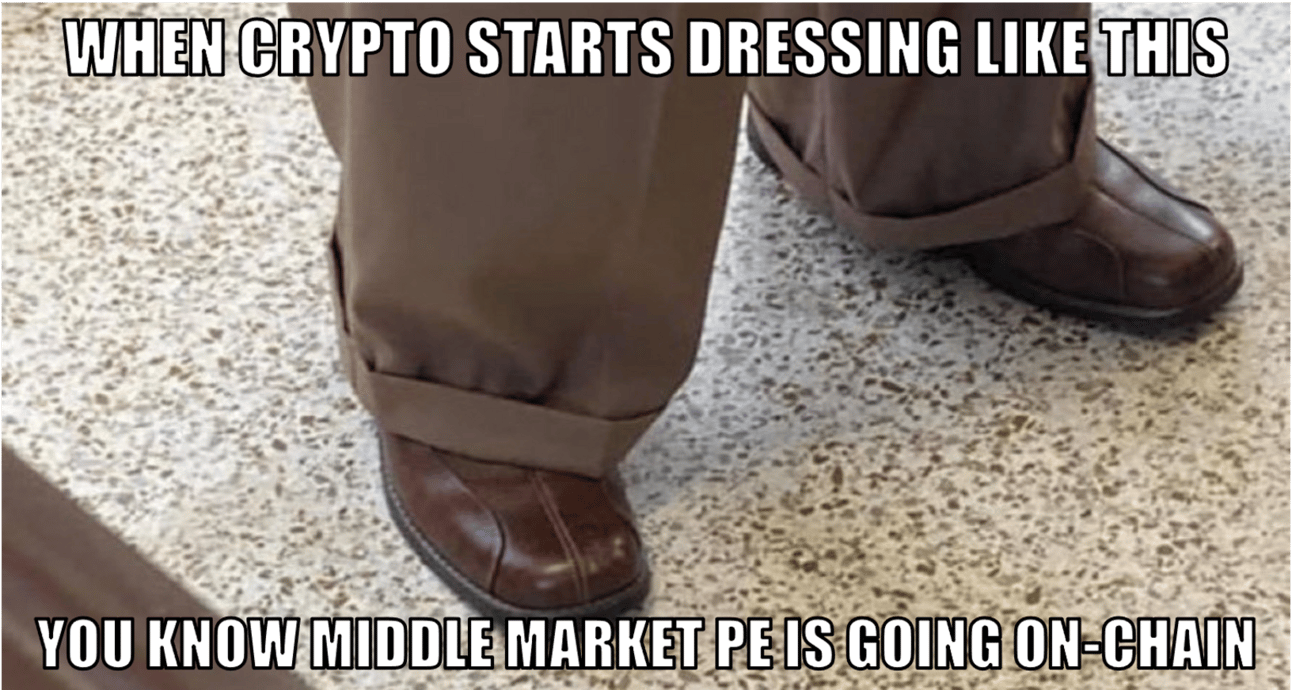- UpRound by Brinc
- Posts
- Real World Assets: The Next Web3 Wave will be Tangible
Real World Assets: The Next Web3 Wave will be Tangible

Real World Assets
The Next Web3 Wave will be Tangible

Crypto cycles come and go, but one thesis is starting to gain consensus. The next wave of Web3 won’t be built on speculation of virtual assets but instead will focus on tokenizing the real world. Real World Assets (RWAs), a category that includes everything from real estate and commodities to treasuries and credit, are being brought on-chain. The result is a growing convergence between traditional and crypto finance that is already reshaping both.
The appeal is straightforward. Tokenized RWAs offer global liquidity, lower transaction costs, greater transparency, and 24/7 access to previously illiquid assets. A retail investor in Asia can now hold fractional ownership of a Manhattan office building. A small business in Brazil can raise working capital by tokenizing invoices. A stablecoin issuer can earn yield by parking capital in tokenized U.S. treasuries. According to CoinGecko, the RWA market recently crossed $230B and institutional adoption is accelerating.
One of the players leading this charge is XDC Network. Originally built for global trade, XDC is becoming a go-to blockchain for tokenized assets. It is fast, efficient, and built for real-world use cases. Transactions are confirmed in just two seconds, fees are near zero, and is compatible with existing financial infrastructure and Ethereum-based tools. For developers and institutions, it provides a seamless way to tokenize assets without building from scratch.
XDC already supports tokenized U.S. treasuries from BlackRock, gold-backed tokens stored in UAE vaults, and $500M worth of tokenized financial assets in Latin America in partnership with Liqi. The focus is on utility: making real-world assets easier to invest in, manage, and move.
To accelerate RWA adoption, Brinc partnered with XDC to launch a 12-week accelerator for early-stage teams building tokenized products. Startups receive up to $100,000 in funding, technical support, and access to XDC’s investor and exchange partners. More importantly, the program helps founders refine their product, positioning, and fundraising to move from prototype to market.
A few standout companies from recent cohorts include:
Redcurry: Real estate-backed digital currency
Krako: Decentralized AI compute marketplace
Scenium: Tokenized access to private assets
As RWAs move from niche to mainstream, we believe the most durable opportunities in Web3 will be grounded in real value. Tokenization represents a structural shift in how capital markets operate. The future of finance will be tangible, global, liquid, and always on.
Interested in Angel Investing?
Join Brinc’s Syndicate, for FREE, and get access to vetted startup deals shaping the future. Investments start at $1,000, though we regularly support investors deploying $100K to $1M.
How to join Brinc’s Syndicate:
Apply to join for free
Get deal memos straight to your inbox
Attend webinars with founders
Decide if you want to invest (or not)

UpRounds are companies in our portfolio that are raising new funding rounds at higher valuations. Our goal is to simply connect interested parties to these great companies. Simple as that.
Aonic
Vertical: AgTech
Description: Aonic is an all-in-one drone solutions provider for enterprises in Southeast Asia looking to modernize and streamline their operations workflow with applications across agriculture, infrastructure and construction.
Fundraising: Aonic is looking to raise $10M to expand across Southeast Asia and hit $100M in annual revenue.
Harmony Baby
Vertical: FoodTech
Description: Harmony Baby Nutrition is using precision fermentation to create infant formula with essential human milk compounds to promote development of newborn immune systems.
Fundraising: Harmony is raising a Series B round to transition their product from R&D to commercialization.
Valkyrie
Vertical: Healthcare
Description: Valkyrie integrates XR with a patented Neuromuscular Electrical Stimulation (NMES) wearable to transform muscle recovery helping individuals strengthen muscles, reduce atrophy, and relearn everyday movements.
Fundraising: Valkyrie is raising a £2M round to get through the FDA approval process, scale sales in the UK, and expand to the USA.
Interested in connecting with any of our portfolio companies above? Click below for a warm introduction.

Angel Academy
What Are You Actually Betting On?
Most angels lose money not because they’re unlucky, but because they don’t understand what they’re really betting on. Startup risk changes at each stage. If you can’t identify what risks you are taking, you are gambling not investing.
Pre-Seed: Can You Build It? - At this stage, you’re betting on technology risk. Can the team build a product that works? They might be building AI tools, lab-grown meat, or a new consumer device. Unless you have unique insight or technical expertise, it’s difficult to assess.
Seed: Can You Sell It? - Now the product exists, and the risk shifts to market risk. Will anyone pay for this? This is where savvy angels get involved. You want signs of early traction, user feedback, or initial revenue. The startup should be learning, iterating, and finding pull.
Series A: Can You Scale It? - With product-market fit in hand, the question becomes execution risk. Can they grow in a repeatable way? Can they acquire customers efficiently? A lot of startups stumble here trying to go from founder-led growth to scalable operations.
Series B+: Can You Profit? - Now it’s about unit economics. Can they make more money per customer than they spend? This determines whether the company can become a real business or just a money-burning rocket ship.
Successful angel investing isn’t about finding perfect companies. It’s about understanding the core risk being solved—and placing your bets accordingly. That’s why we focus on Seed to Series B, where upside is real and the signals are loud enough to hear.
Thanks for reading!

